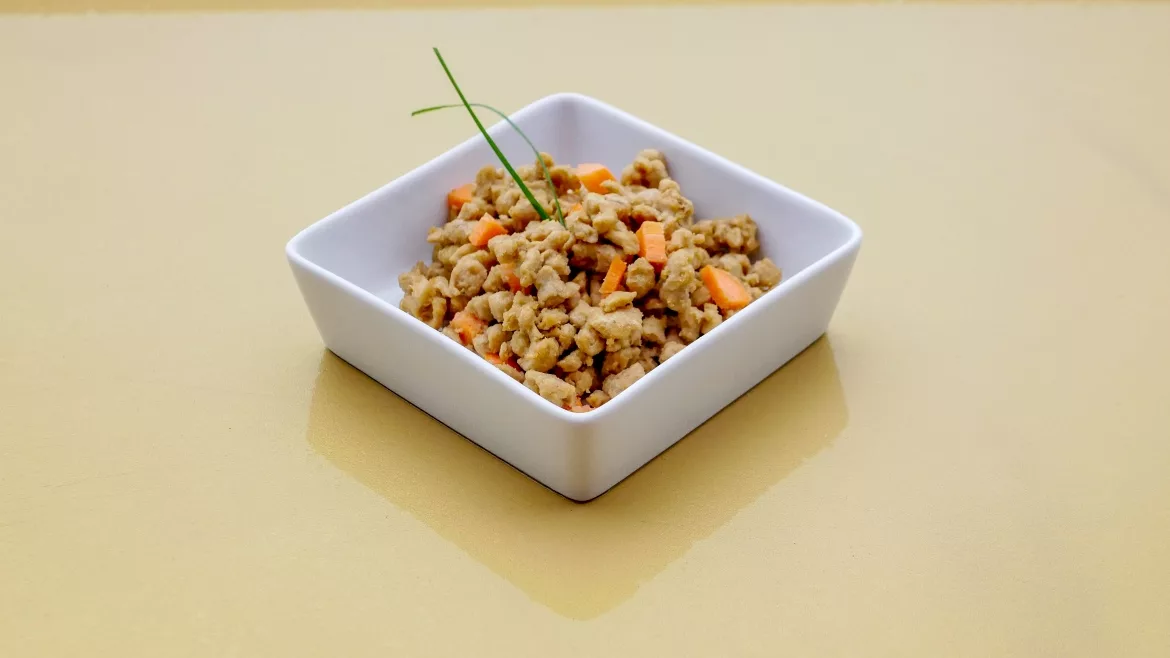Alternative Protein
BioCraft Introduces Chicken Cell Line

Image courtesy of BioCraft Pet Nutrition
BioCraft Pet Nutrition announced it has derived and characterized a chicken cell line for cat and dog food, adding another meat ingredient to its portfolio that includes cultured mouse meat.
BioCraft’s cultured chicken is designed to offer essential nutrients cats and dogs need, without chemical and bacterial contaminants, antibiotics, steroids or other hormones such as those that can be found in traditional meat. Derived from stem cells, BioCraft’s chicken is neither genetically modified nor immortalized. While it is common to license cell lines from third-party providers, BioCraft’s cell lines are owned by the company, with the chicken stem cell line being derived by BioCraft’s in-house stem cell scientist and veterinarian Rupal Tewari.
Although chicken is among the top allergens for both cats and dogs, it is still one of the most commonly used ingredients in pet food. As such, BioCraft has developed the chicken cell line to meet the demand of pet food manufacturer partners and consumers, for conventional species.
“While cultured mouse meat—the ancestral diet of the cat—remains our primary focus for cat food, the new chicken cell line for cats or dogs is ideal for pet food manufacturers and ultimately pet parents who lean toward more traditional meat ingredients,” says BioCraft founder and CEO Shannon Falconer.
BioCraft is working with pet food manufacturers interested in transitioning their conventional meat ingredients to supply-chain stable, sustainable, safe, humane cultured meat. BioCrafted meat offers pet food companies a uniform raw material that is less likely to carry pathogens such as Salmonella, E. coli, and other common fecal-borne bacteria that lead to costly recalls.
BioCraft’s chicken is created with the consistency of the “meat slurry” used in conventional pet food manufacturing, and can be used as a one-to-one replacement in wet or dry foods, treats and fresh pet foods. The company says its meats are nutritionally robust, with protein, vitamins, fats and amino acids such as taurine—a nutrient typically lost during high-heat processing during the rendering process of conventional meat, then added back in synthetic form for nutritionally complete pet foods.
Looking for a reprint of this article?
From high-res PDFs to custom plaques, order your copy today!







